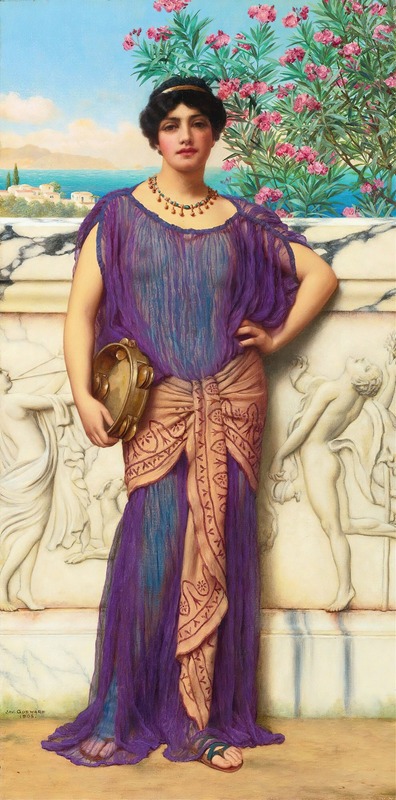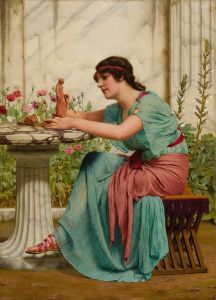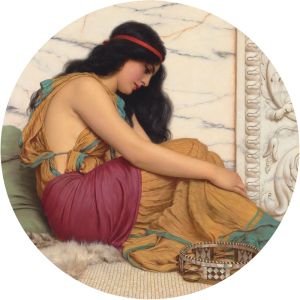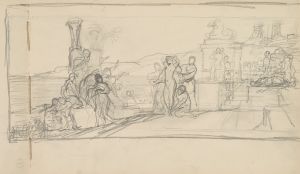
The Tambourine Girl
A hand-painted replica of John William Godward’s masterpiece The Tambourine Girl, meticulously crafted by professional artists to capture the true essence of the original. Each piece is created with museum-quality canvas and rare mineral pigments, carefully painted by experienced artists with delicate brushstrokes and rich, layered colors to perfectly recreate the texture of the original artwork. Unlike machine-printed reproductions, this hand-painted version brings the painting to life, infused with the artist’s emotions and skill in every stroke. Whether for personal collection or home decoration, it instantly elevates the artistic atmosphere of any space.
John William Godward was a British painter born on August 9, 1861, and he is often associated with the late Neoclassical movement. He is known for his depictions of women in classical settings, often drawing inspiration from ancient Rome and Greece. Godward's works are characterized by their attention to detail, vibrant colors, and the use of classical architecture and drapery as backdrops.
"The Tambourine Girl" is one of Godward's paintings that exemplifies his style and thematic focus. Although specific details about the painting's creation, such as the exact year it was painted, are not widely documented, it is consistent with Godward's body of work from the late 19th to early 20th century. The painting features a young woman holding a tambourine, a common musical instrument associated with dance and festivity, which adds a sense of movement and rhythm to the composition.
In "The Tambourine Girl," Godward employs his signature technique of combining realistic human figures with idealized classical settings. The woman in the painting is depicted with meticulous attention to detail, from the texture of her skin to the folds of her clothing. Her attire is reminiscent of ancient Roman or Greek fashion, which is a hallmark of Godward's work. The background often includes elements such as marble columns or lush landscapes, which serve to enhance the classical ambiance of the scene.
Godward's use of color is another notable aspect of "The Tambourine Girl." He often employed a rich palette to bring his subjects to life, using contrasting hues to highlight the figure against the background. The interplay of light and shadow in the painting adds depth and dimension, drawing the viewer's eye to the central figure and her tambourine.
The artist's focus on beauty and idealization is evident in "The Tambourine Girl," as with many of his other works. Godward was known for his ability to capture the grace and elegance of his subjects, often portraying them in serene and contemplative poses. This emphasis on aesthetic beauty was a defining characteristic of the Neoclassical movement, which sought to revive the artistic ideals of ancient civilizations.
Despite his success during his lifetime, Godward's work fell out of favor in the early 20th century as modern art movements began to gain prominence. However, there has been a resurgence of interest in his paintings in recent decades, with art historians and collectors recognizing the technical skill and timeless appeal of his work.
"The Tambourine Girl," like many of Godward's paintings, offers a glimpse into a romanticized vision of the past, where beauty and harmony are paramount. It reflects the artist's dedication to his craft and his ability to transport viewers to a world of classical elegance and tranquility. Today, Godward's paintings, including "The Tambourine Girl," are appreciated for their artistic merit and their contribution to the Neoclassical tradition.


















